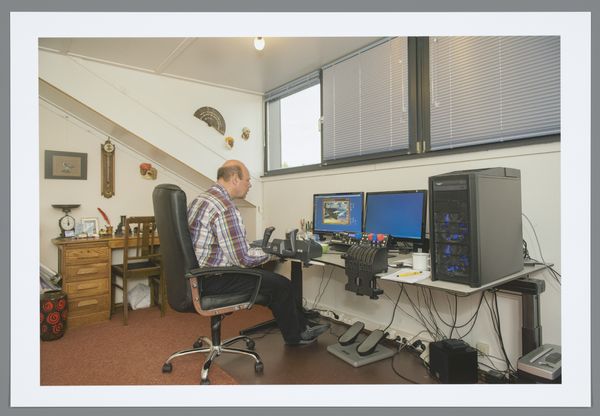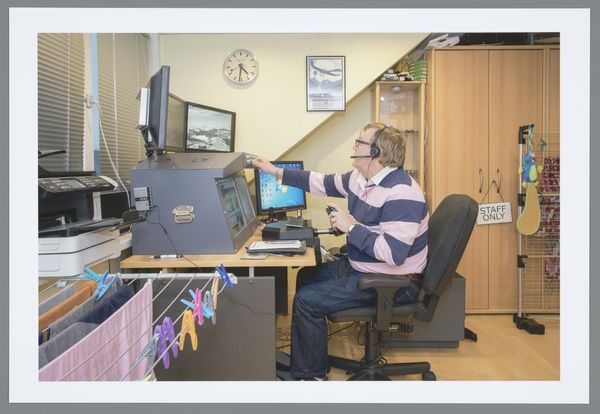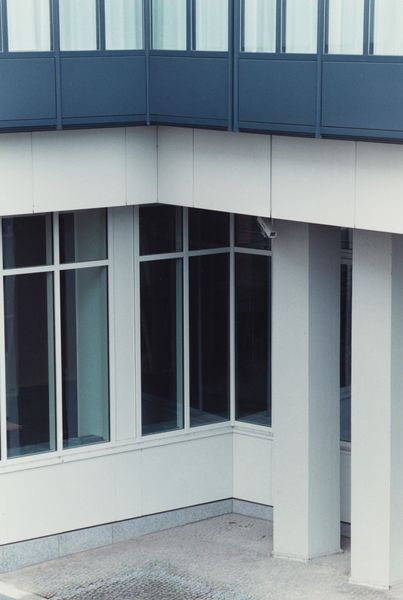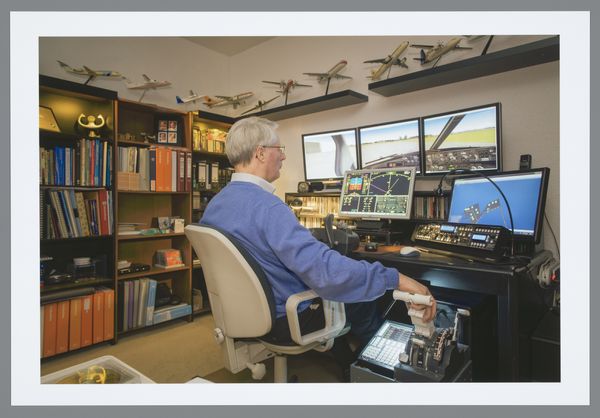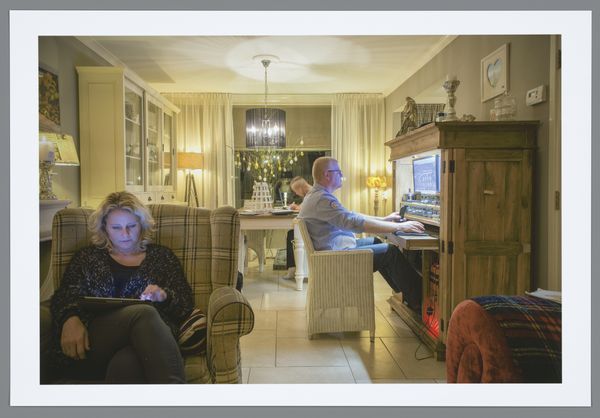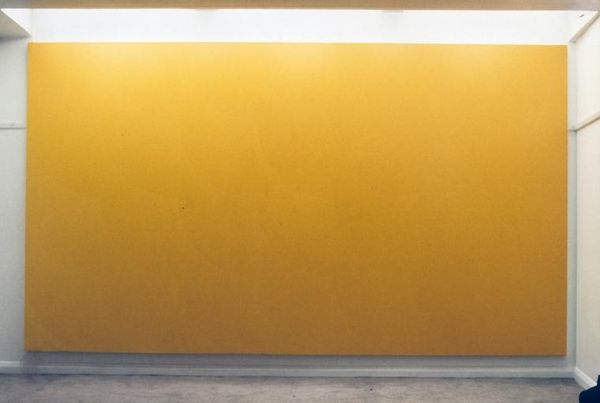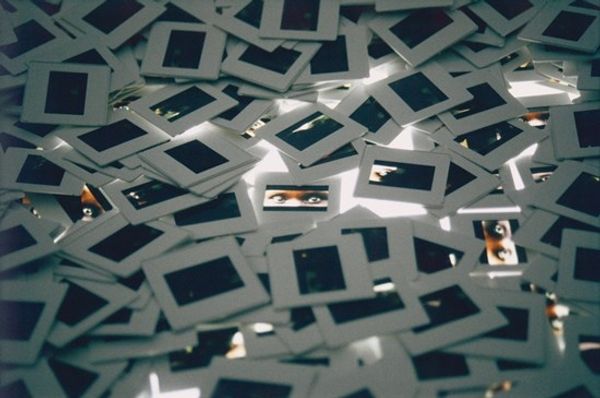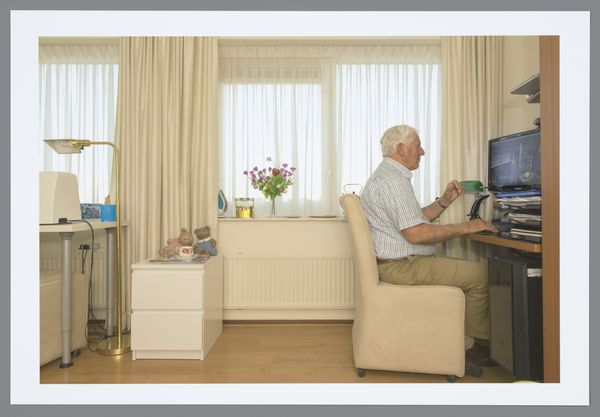
photography
#
portrait
#
contemporary
#
photography
#
genre-painting
#
realism
Dimensions: height 289 mm, width 434 mm, height 328 mm, width 483 mm
Copyright: Rijks Museum: Open Domain
Curator: At first glance, the subject’s immersion in his digital workspace and gaming setup feels isolating, doesn’t it? There's something melancholy in that detachment. Editor: It strikes me as very ordinary, almost deliberately mundane. A simple composition, a very common scene–it could be anywhere, and any student's room. What grabs you first about it? Curator: Let's begin by placing this photographic piece within its historical context. Titled "Jordy (19)," this artwork, attributed to Gerrit Meerman and likely produced around 2016, operates on several levels concerning contemporary themes around youth and labor. We could easily situate this in a history of portraiture going all the way back to the Dutch Golden age. Editor: Okay, so if this a take on genre painting with that domestic scene and labour we are considering, what is happening to labor when we focus on his "tools": gaming joysticks, the dual monitors? It appears that leisure, work, and even the "tools" of creation have all become indistinguishable. Curator: Precisely! And that blending of spheres is so significant. Meerman's photo encapsulates the precarious position of young people in the digital age. The gaming equipment becomes indicative of a workforce now defined by constant multitasking, hyper-specialization, and, often, unpaid labor—influencing, beta-testing, content creating... it all becomes blurred, doesn't it? Editor: The construction visible through the window provides an ironic framing of a young subject constructing, literally building perhaps, something else virtually at his desk. Is Meerman then reflecting a larger tension between tangible construction and the more "ephemeral" labor we're seeing from someone who is not physically making something? Curator: I believe that the choice of realism highlights the very normal, unglamorous side of digital work. What is seen in his "portrait" and working process serves a purpose. The choice not to glamorize the gaming subject serves to underscore just how common yet politically relevant it is. We get a sense of an entire generation in this portrait! Editor: It raises questions, though, about the increasing precarity that defines labour today, as he assembles a scene on the computer, or tests games, he’s already participating in labor practices he likely doesn't understand, which feels really critical for me. I am glad we saw the working elements of what "making" looks like for many in the 21st century through material culture and this striking photograph. Curator: Absolutely, and I find myself now considering the impact of late capitalism on identity itself, through Meerman's thought provoking composition. The photographic materials force us to examine assumptions about work, personhood, and the construction of reality in our time.
Comments
No comments
Be the first to comment and join the conversation on the ultimate creative platform.


